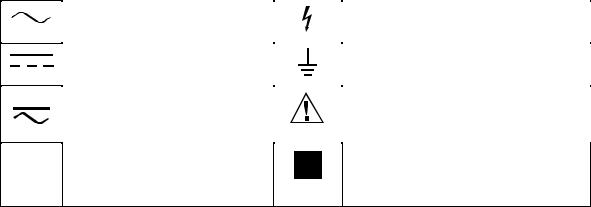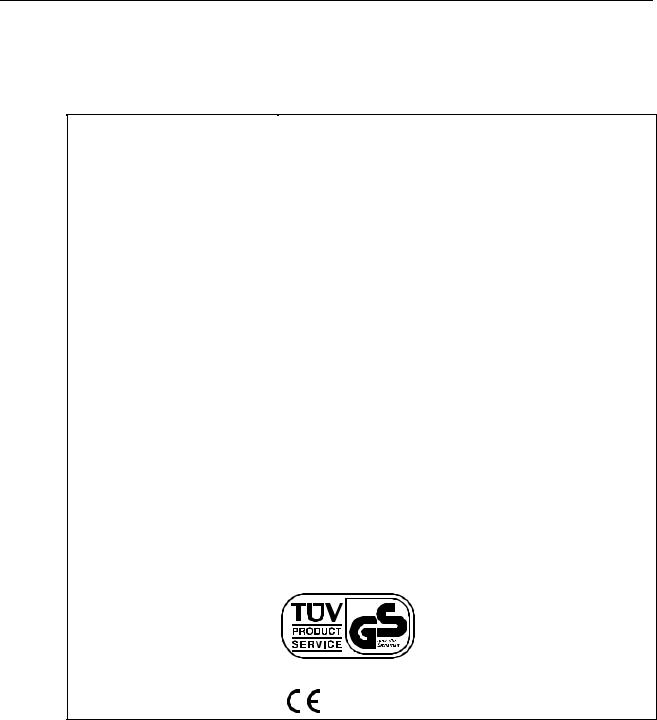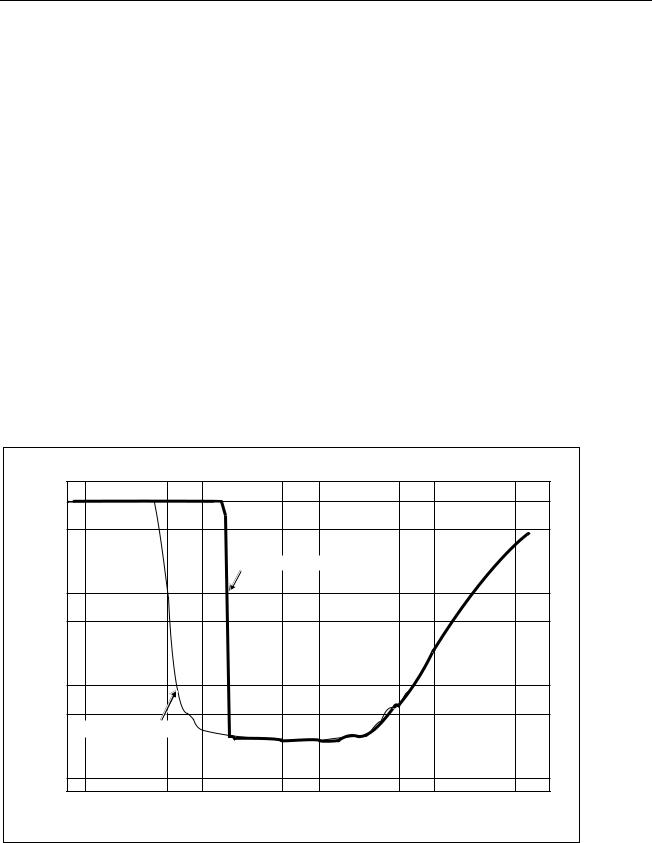Fluke 7 Series, 12B, 18 Schematic

®
12B
18
7 Series
Meters
Service Manual
PN 602730
August 1996
© 1996 Fluke Corporation, All rights reserved. Printed in U.S.A. All product names are trademarks of their respective companies.
LIMITED WARRANTY & LIMITATION OF LIABILITY
Each Fluke product is warranted to be free from defects in material and workmanship under normal use and service. The warranty period for Models 7-300, 7-600, and 12B is two years and begins on the date of shipment. The warranty period for Model 18 is three years and begins on the date of shipment. Parts, product repairs and services are warranted for 90 days. This warranty extends only to the original buyer or end-user customer of a Fluke authorized reseller, and does not apply to fuses, disposable batteries or to any product which, in Fluke’s opinion, has been misused, altered, neglected or damaged by accident or abnormal conditions of operation or handling. Fluke warrants that software will operate substantially in accordance with its functional specifications for 90 days and that it has been properly recorded on non-defective media. Fluke does not warrant that software will be error free or operate without interruption.
Fluke authorized resellers shall extend this warranty on new and unused products to end-user customers only but have no authority to extend a greater or different warranty on behalf of Fluke. Warranty support is available if product is purchased through a Fluke authorized sales outlet or Buyer has paid the applicable international price. Fluke reserves the right to invoice Buyer for importation costs of repair/replacement parts when product purchased in one country is submitted for repair in another country.
Fluke’s warranty obligation is limited, at Fluke’s option, to refund of the purchase price, free of charge repair, or replacement of a defective product which is returned to a Fluke authorized service center within the warranty period.
To obtain warranty service, contact your nearest Fluke authorized service center or send the product, with a description of the difficulty, postage and insurance prepaid (FOB Destination), to the nearest Fluke authorized service center. Fluke assumes no risk for damage in transit. Following warranty repair, the product will be returned to Buyer, transportation prepaid (FOB Destination). If Fluke determines that the failure was caused by misuse, alteration, accident or abnormal condition of operation or handling, Fluke will provide an estimate of repair costs and obtain authorization before commencing the work. Following repair, the product will be returned to the Buyer transportation prepaid and the Buyer will be billed for the repair and return transportation charges (FOB Shipping Point).
THIS WARRANTY IS BUYER’S SOLE AND EXCLUSIVE REMEDY AND IS IN LIEU OF ALL OTHER WARRANTIES, EXPRESS OR IMPLIED, INCLUDING BUT NOT LIMITED TO ANY IMPLIED WARRANTY OF MERCHANTABILITY OR FITNESS FOR A PARTICULAR PURPOSE. FLUKE SHALL NOT BE LIABLE FOR ANY SPECIAL, INDIRECT, INCIDENTAL OR CONSEQUENTIAL DAMAGES OR LOSSES, INCLUDING LOSS OF DATA, WHETHER ARISING FROM BREACH OF WARRANTY OR BASED ON CONTRACT, TORT, RELIANCE OR ANY OTHER THEORY.
Since some countries or states do not allow limitation of the term of an implied warranty, or exclusion or limitation of incidental or consequential damages, the limitations and exclusions of this warranty may not apply to every buyer. If any provision of this Warranty is held invalid or unenforceable by a court of competent jurisdiction, such holding will not affect the validity or enforceability of any other provision.
Fluke Corporation |
Fluke Europe B.V. |
P.O. Box 9090 |
P.O. Box 1186 |
Everett, WA 98206-9090 |
5602 BD Eindhoven |
U.S.A. |
The Netherlands |
5/94
Table of Contents
Chapter |
Title |
Page |
1 |
Introduction and Specifications........................................................ |
1-1 |
|
Introduction ....................................................................................................... |
1-1 |
|
Specifications .................................................................................................... |
1-1 |
2 |
Theory of Operation........................................................................... |
2-1 |
|
Introduction ....................................................................................................... |
2-1 |
|
Analog Measurement IC (U1) ........................................................................... |
2-1 |
|
Microcomputer IC (U2)..................................................................................... |
2-3 |
|
Automatic Selection Input Resistance............................................................... |
2-3 |
3 |
Maintenance ....................................................................................... |
3-1 |
|
Introduction ....................................................................................................... |
3-1 |
|
Disassembly and Reassembly............................................................................ |
3-1 |
|
Cleaning............................................................................................................. |
3-6 |
|
Performance Tests ............................................................................................. |
3-6 |
|
Calibration Adjustments for Models 12B and 18.............................................. |
3-9 |
|
Calibration Adjustments for Models 7-300 and 7-600...................................... |
3-10 |
4 |
Parts and Schematics........................................................................ |
4-1 |
|
Introduction ....................................................................................................... |
4-1 |
|
How to Obtain Parts .......................................................................................... |
4-1 |
|
Manual Status Information ................................................................................ |
4-2 |
|
Newer Instruments............................................................................................. |
4-2 |
|
Parts Lists, Drawings, and Schematics.............................................................. |
4-2 |
i

12/18/7 Service
Service Manual
ii
List of Tables
Table |
Title |
Page |
1-1. |
Specifications......................................................................................................... |
1-2 |
2-1. |
Electrical Components on Main PCA.................................................................... |
2-2 |
2-2. |
U1 Pinout Table ..................................................................................................... |
2-4 |
3-1. |
Required Equipment .............................................................................................. |
3-6 |
3-2. |
Performance Tests for Models 7-300 and 7-600 ................................................... |
3-7 |
3-3. |
Performance Tests for Models 12B and 18 ........................................................... |
3-8 |
4-1. |
Manual Status Information .................................................................................... |
4-2 |
4-2. |
Models 12B, 18, and 18/AL Final Assembly ........................................................ |
4-3 |
4-3. |
Models 7-300 and 7-600 Final Assembly.............................................................. |
4-5 |
4-4. |
A1 Main PCA ........................................................................................................ |
4-7 |
iii

12/18/7 Service
Service Manual
iv
List of Figures
Figure |
Title |
Page |
2-1. |
Typical Automatic Selection Input Resistance with DC Volts Function Selected |
2-3 |
3-1. |
Models 12B and 18 Disassembled Unit................................................................. |
3-3 |
3-2. |
Models 7-300 and 7-600 Disassembled Unit......................................................... |
3-4 |
3-3. |
Removing and Reinserting the Printed Circuit Assembly .................................... |
3-5 |
3-4. |
Calibration Adjustment.......................................................................................... |
3-10 |
4-1. |
Models 12B and 18 Final Assembly...................................................................... |
4-4 |
4-2. |
Models 7-300 and 7-600 Final Assembly.............................................................. |
4-6 |
4-3. |
Models 12B, 18, 7-300, and 7-600 Main PCA Components ................................. |
4-9 |
4-4. |
Model 12B Schematic............................................................................................ |
4-10 |
4-5. |
Model 18 Schematic .............................................................................................. |
4-12 |
4-6. |
Model 7-300 Schematic ......................................................................................... |
4-14 |
4-7. |
Model 7-600 Schematic ......................................................................................... |
4-16 |
v

12/18/7 Service
Service Manual
vi

MULTIMETER SAFETY
The Fluke 7-300, 7-600, 12B, and 18 Meters have been designed and tested according to IEC Publication 1010, Safety Requirements for Electronic Measuring Apparatus. This manual contains information and warnings that must be followed to ensure safe operation and keep the meter in safe condition. Use of this equipment in a manner not specified herein may impair the protection provided by the equipment.
These multimeters comply with part 15 of the FCC Rules. Operation is subject to the following two conditions: (1) these meters may not cause harmful interference, and (2) these meters must accept any interference received, including interference that may cause undesired operation.
Some common international electrical symbols are shown below:
AC: ALTERNATING CURRENT |
|
DANGEROUS VOLTAGE |
|
|
|
DC: DIRECT CURRENT |
|
EARTH GROUND |
|
|
|
EITHER AC OR DC CURRENT |
|
SEE EXPLANATION IN MANUAL |
|
|
|
DOUBLE INSULATION FOR X FUSE PROTECTION AGAINST ELECTRIC
SHOCK
Before using the meter, read the following safety information carefully. In this manual, "Warning" is reserved for conditions and actions that pose hazard(s) to the user; "Caution" is reserved for conditions and actions that may damage your meter.
∙Avoid working alone.
∙Follow all safety procedures for equipment being tested.
∙Inspect the test leads for damaged insulation or exposed metal. Check test lead continuity. Damaged leads should be replaced.
∙Be sure the meter is in good operating condition.
∙Select the proper function for your measurement.
∙To avoid electrical shock, use caution when working above 60V dc or 30V ac rms.
∙Disconnect the live test lead before disconnecting the common test lead.
∙Disconnect the power and discharge high-voltage capacitors before testing in resistance and diodes or continuity.
∙When making a current measurement, turn the circuit power off before connecting the meter in the circuit.
∙Check meter fuses before measuring transformer secondary or motor winding current. An open fuse may allow high voltage build-up, which is potentially hazardous.
∙Use clamp-on probes when measuring circuits exceeding 10 amps.
∙When servicing the meter, use only the replacement parts specified.
∙Do not allow the meter to be used if it is damaged or if its safety features are impaired.
Chapter 1
Introduction and Specifications
Introduction
PWarning
Service procedures described herein should be performed by qualified personnel only. To avoid electric shock, perform only those service procedures described in this manual.
The 12B, 18, 7 Series Service Manual provides the information necessary to service the Fluke Model 12B, Model 18, and Models 7-300 and 7-600 meters. This manual provides the following information:
∙Specifications (Chapter 1)
∙Basic theory of operation (Chapter 2)
∙Disassembly and reassembly (Chapter 3)
∙Performance tests (Chapter 3)
∙Calibration (Chapter 3)
∙Illustrated parts lists and schematic diagrams (Chapter 4) Refer to the users instruction sheet for operating instructions.
Specifications
Specifications are in Table 1-1. Accuracy is specified for a period of one year after calibration, at 18ºC to 28ºC (64ºF to 82ºF) with relative humidity to 90%. AC conversions are ac-coupled, average responding, and calibrated to the rms value of a sine wave input.
1-1

12B/18/7 Series
Service Manual
Accuracy specifications are given as follows:
±([% of reading] + [number of least significant digits])
Maximum Voltage Between any Terminal and Earth Ground (excludes 10% tolerance)
Display
Operating Temperature
Storage Temperature
Temperature Coefficient
Relative Humidity
Battery Type
Battery Life
Shock, Vibration
Size (HxWxL)
Weight
EMI Regulations
Safety
Table 1-1. Specifications
600V ac rms or dc
3-3/4-digits, 4000 counts, updates 4/sec
-10°C to 50°C
-30°C to 60°C indefinitely (to -40°C for 100 hrs)
0.1 x (specified accuracy)/°C (<18°C or >28°C)
0% to 90% (-10°C to 35°C)
0% to 70% (35°C to 50°C)
9V, NEDA 1604 or IEC 6F22
650 continuous hours with alkaline; 600 hours for Model 7 450 continuous hours with carbon-zinc; 400 hours for Model 7
1 meter shock. Per MIL-T-28800D for a Class 3 Instrument
1.35 in x 2.75 in x 5.55 in
(3.46 cm x 7.05 cm x 14.23 cm)
10 oz (286g)
Complies with FCC Part 15, Class B, and VDE 0871B.
Designed to Protection Class II requirement of UL1244, ANSI/ISA-S82.01 - 1988, CSA C22.2 No 231, and VDE 0411, and IEC 1010-1 overvoltage category III (CAT III), 600V.
Trademark of TÜV Product Services. IEC 348 certification; designed to comply with EN 61010-1: 1993.
1-2

Introduction and Specifications 1
Specifications
|
|
Table 1-1. Specifications (continued) |
|
|||
|
|
|
|
|
|
|
|
|
|
|
Accuracy (50 to 400 Hz) |
||
|
|
|
|
|
|
|
Function |
Range |
|
Resolution |
7-300 |
7-600 |
12B/18 |
|
|
|
|
|
|
|
f |
4000 mV1 |
|
1 mV |
NA |
NA |
±(1.9%+3) |
|
4.000V |
|
0.001V |
NS2 |
NS2 |
±(1.9%+3) |
|
40.00V |
|
0.01V |
±(2.9%+3) |
±(2.9%+3) |
±(1.9%+3) |
|
300.0V |
|
0.1V |
±(2.9%+3) |
NA |
NA |
|
400.0V |
|
0.1V |
NA |
±(2.9%+3) |
±(1.9%+3) |
|
600.0V |
|
1V |
NA |
±(2.9%+3) |
±(1.9%+3) |
E |
4000 mV1 |
|
1 mV |
NA |
NA |
±(0.9%+2) |
|
4.000V |
|
0.001V |
NS2 |
NS2 |
±(0.9%+2) |
|
40.00V |
|
0.01V |
±(1.5%+1) |
±(1.5%+1) |
±(0.9%+1) |
|
300.0V |
|
0.1V |
±(1.5%+1) |
NA |
NA |
|
400.0V |
|
0.1V |
NA |
±(1.5%+1) |
±(0.9%+1) |
|
600V |
|
1V |
NA |
±(1.5%+1) |
±(0.9%+1) |
J |
400.0Ω |
|
0.1Ω |
±(1.5%+2) |
±(1.5%+2) |
±(0.9%+2) |
|
4.000 kΩ |
|
0.001 kΩ |
NA |
NA |
±(0.9%+1) |
|
40.00 kΩ |
|
0.01 kΩ |
NA |
NA |
±(0.9%+1) |
|
400.0 kΩ |
|
0.1 kΩ |
NA |
NA |
±(0.9%+1) |
|
4.000 MΩ |
|
0.001 MΩ |
NA |
NA |
±(0.9%+1) |
|
40.00 MΩ |
|
0.01 MΩ |
NA |
NA |
±(1.5%+3) |
K |
1.000 μF |
|
0.001 μF |
NA |
NA |
±(1.9%+2) |
|
10.00 μF |
|
0.01 μF |
NA |
NA |
±(1.9%+2) |
|
100.0 μF |
|
0.1 μF |
NA |
NA |
±(1.9%+2) |
|
1000 μF |
|
1 μF |
NA |
NA |
±(1.9%+2) |
|
10000 μF |
|
10 μF |
NA |
NA |
±(10%+90) |
|
|
|
|
|
|
typical |
LM3 |
2.000V |
|
0.001V |
NA |
NA |
±(0.9%+2) |
1.The 4000 mV range can be entered only in the manual range mode. Use the 4000 mV range with accessories. The 4000 mV range is not available on the Model 7.
2.Not specified for the Model 7.
3.The beeper is guaranteed to come on at <25Ω and turn off at >250Ω. The meter detects opens or shorts of 250 μs or longer. These values are not specified for the Model 7.
1-3

12B/18/7 Series
Service Manual
|
|
Table 1-1. Specifications (continued) |
|
||
|
|
|
|
|
|
|
|
|
|
Common Mode |
|
|
|
|
|
Rejection Ratio |
|
|
Overload |
|
Input |
(1 kW |
Normal Mode |
Function |
Protection1 |
|
Impedance |
Unbalanced)2 |
Rejection2 |
|
|
|
(Nominal) |
|
|
|
|
|
|
|
|
f |
600V rms or dc |
>5 MW <100pF2 |
|
|
Automatic Selection |
|
|
and LoZ = >2 kW |
|
|
<200pF |
|
|
(ac coupled)3 |
E |
600V rms or dc |
>10MW <100pF2 |
|
|
Automatic Selection |
|
|
and LoZ = >2 kW |
|
|
<200pF3 |
|
|
Open Circuit |
|
|
Test Voltage |
|
|
|
J |
600V rms or dc |
<1.5V dc |
|
|
|
L2 |
600V rms or dc |
2.4-3.0V dc |
|
|
|
>60 dB at dc 50 or 60 Hz
>100 dB at dc, 50 or 60 Hz
Full Scale Voltage
To 4.0 MW |
40 MW |
|
|
<450 mV |
<1.5V dc |
dc |
|
|
|
2.400V dc
>50 dB at 50 Hz or 60 Hz
Short Circuit
Current
<500 mA
0.95 mA (typical)
1.3 x 106 V Hz maximum.
2.Does not apply to Model 7.
3.~2 kΩ input impedance up to 50V. Impedance increases with input voltage to >300 kΩ at 600V.
MIN MAX Recording Accuracy and Response Time (Models 12B and 18)
Specified accuracy of the measurement function ±12 digits for changes >200 ms in duration (±40 digits in ac). Typical 100 ms response to 80%.
MIN MAX Recording with Elapsed Time (Models 12B and 18)
Elapsed Time: 0 to 100 hours (99.59)
Resolution: 1 minute
Accuracy: 0.3% typical
Continuity Captureä (Model 12B)
(Open/Short Capture Model 18)
Detects opens or shorts of 250 ms or longer.
1-4
Chapter 2
Theory of Operation
Introduction
Chapter 2 provides a basic theory of operation for the Models 7, 12B, and 18 Meters. Electrical components on the printed circuit assembly (A1 Main PCA) are listed in Table 2-1. Refer to Figure 4-3 for the location of these components and Figures 4-4 through 4-7 for the schematic diagrams.
The analog/digital IC (U1) performs the electrical measurement functions. See Table 2-2 for pin names and descriptions. The microcomputer (U2) controls U1, the LCD (U3), and the user interface. Discrete components support U1 and U2, provide reference standards for measurements, and provide input overload protection.
Analog Measurement IC (U1)
U1 performs the following analog functions: a/d converter, ac to dc converter, Automatic Selection circuitry, active filter, passive filter, power supply, range configuration circuitry, signal routing circuitry, beeper driver, digital control circuitry, and digital U2 interface circuitry.
The a/d converter is a patented dual-rate, dual-slope converter. The dual-rate conversion allows for MIN MAX (Models 12B and 18 only) and fast autoranging functions. The ac to dc converter is full-wave rectified and average-responding. The active and passive filters are two-pole and one-pole low-pass filters (respectively) that are used for signal filtering prior to a/d conversion. The internal power supply generates a ground voltage nominally +3V relative to VSS. Range configuration circuitry connects the Z1 resistor network as needed for different ranges. Routing circuitry connects the various signal conditioning circuits as needed. The a/d converter and a counter are controlled by a state machine.
2-1

12B/18/7 Series
Service Manual
Table 2-1. Electrical Components on Main PCA
Circuit and Function
Analog Measurement IC
Microcomputer IC
Input Divider and Ohms Reference Resistor Network Input Divider AC Coupling Capacitor
J2 Input Receptacle Voltage Sense Resistor
J1 Input Receptacle Voltage Sense Resistor Reference Voltage for Volts Measurements A/D Converter Integrate Capacitor
A/D Converter Autozero Capacitor
A/D Converter Gain Resistors
Active Filter Components
Passive Filter Components
AC to DC Converter Gain Resistors
AC to DC Converter AC Coupling Capacitor
Bias Current Setting Resistor
DGND-VSS Voltage Setting Resistors
Power Supply Bypass Capacitors
Reverse Battery Protection
System Clock
Automatic Selection Input Current Limiters
Automatic Selection Input Positive Temp. Coef. Thermistor Automatic Selection Input Voltage Clamp Circuit Automatic Selection Input Fusible Resistor
Microcomputer Reset Circuit
On/Off and Automatic Selection Select Slide Switch
Beeper
Beeper Current Limiter
Slide Switch Protection
Switch Sense Bypass Capacitor
Input Divider Bypass Capacitor
Zero Ohm Jumpers
Component Designator(s)
U1
U2
Z1
C14
R17
R14
VR1, R4, R5, R6, R26
C2
C1
R1, R3, R15
R7, R8, C5, C6
R9, C7
R11, R12, R13
C8
R2
R10, R24
C3, C15
CR1
Y1
R16, R18, R29
RT1
Q1, Q2, CR2, R28
R19
R23, R25, C10, C13, CR3 S1
LS1
R22
E1
C9
C16
R20, R21, R27
2-2

Theory of Operation 2
Microcomputer IC (U2)
Finally, digital circuitry interfaces with U2 via a parallel address and bidirectional data bus.
Voltage is measured using a ratio comparison of the unknown voltage to the reference voltage (REFI pin). Resistance is calculated using a ratio comparison of the voltage across the unknown resistor to the voltage across a precision reference resistor, with the same current in both. Capacitance is measured by determining the amount of charge added for a given dc voltage change.
Microcomputer IC (U2)
U2 writes range settings and a/d converter information to U1. U2 reads a/d converter results and status information. This includes the low battery check, slide-switch position, continuity check, and Automatic Selection data. The microcomputer performs math operations on the raw data from U1 and configures it for the LCD. U2 also reads pushbutton inputs. Finally, the 2.1 MHz clock signal at U2 is divided down to 131 kHz and sent to U1 (CLK pin) for the counter.
Automatic Selection Input Resistance
As shown in Figure 2-1, the input resistance for the Automatic Selection function is nonlinear. The data in the graph are for the volts dc function (any range) and are the steady state values obtained after the PTC thermistor (RT1) has stabilized. The data also apply for the volts ac function.
(kΩ) |
500 |
|
|
|
|
|
|
|
|
|
Positive DCV Input |
|
|
||
Tesistance |
|
|
|
|
|
||
100 |
|
|
|
|
|
|
|
50 |
|
|
|
|
|
|
|
Signal Input |
|
|
|
|
|
|
|
10 |
|
|
|
|
|
|
|
Small |
5 |
|
|
|
|
|
|
Negative DCV Input |
|
|
|
|
|
||
|
|
|
|
|
|
||
|
1 |
|
|
|
|
|
|
|
0.1 |
0.5 |
1.0 |
5.0 |
10.0 |
50.0 |
500.0 |
|
|
|
|
|Vin| (Vdc) |
|
|
|
|
|
|
|
|
|
|
as01f.eps |
Figure 2-1. Typical Automatic Selection Input Resistance with DC Volts Function Selected
2-3
